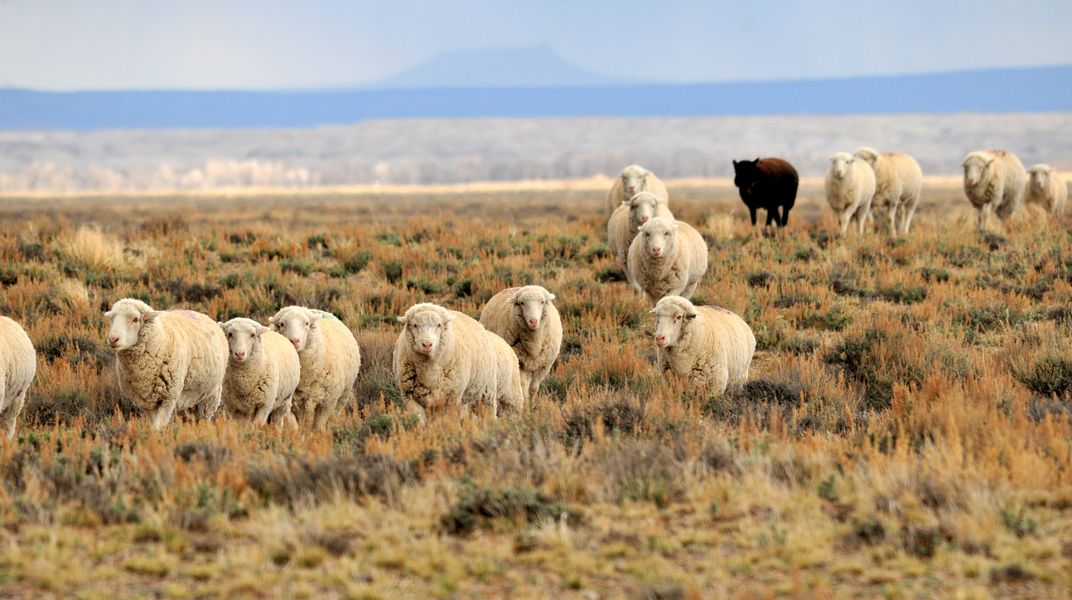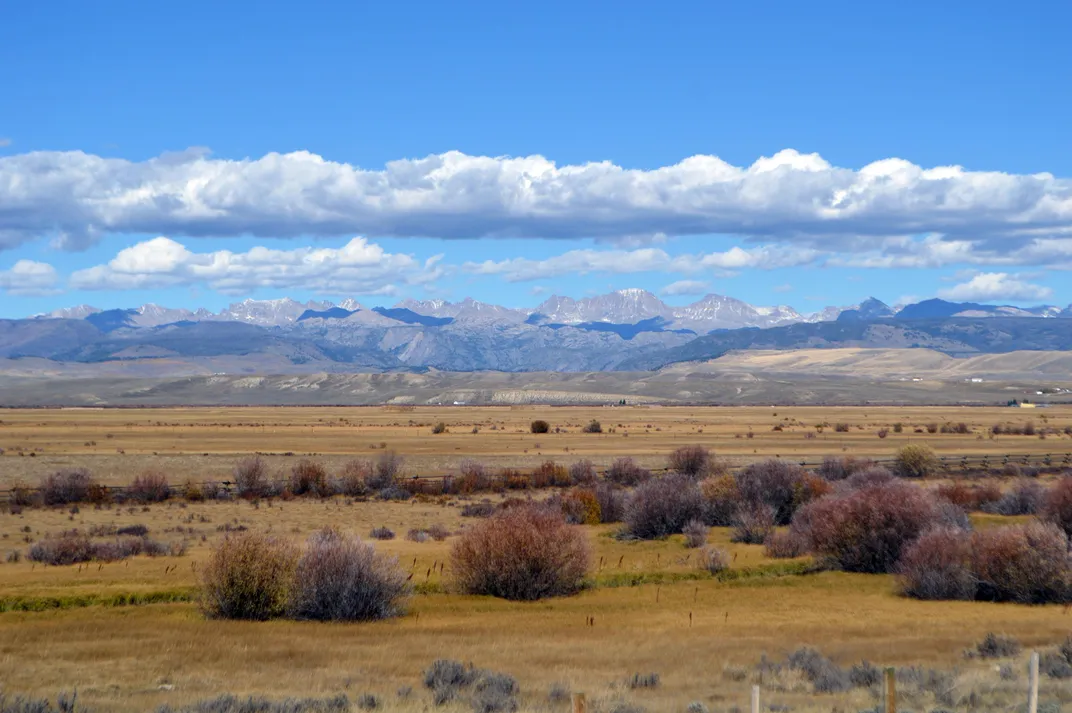New Schemes Pay You to Save Species—But Will They Work?
Programs being set up in the American West are taking a radical new approach: paying landowners to preserve animal habitat.
/https://tf-cmsv2-smithsonianmag-media.s3.amazonaws.com/filer/14/be/14bef889-b176-44cf-81e2-63779a4a96f8/16759460184_8d20830bd7_o.jpg)
The greater sage-grouse is a bird in trouble. Once flourishing across the sagebrush and scrublands of the western United States and Canada, its numbers have plummeted by 98 percent in the past century. Despite that, the U.S. Fish and Wildlife Service declined to list Centrocercus urophasianus under the Endangered Species Act in 2015. Ongoing agricultural and energy development in the West means that the bird will have few options to recover its once-plentiful numbers.
So conservationists at the Environmental Defense Fund turned to a new and occasionally controversial method to try and save the greater sage-grouse. Known as a habitat exchange, the project would allow private landowners to earn credits by preserving and maintaining habitat for the greater sage-grouse. In return, they would be able to sell those credits to commercial developers whose projects would disturb the bird’s habitat elsewhere. The goal is to maintain, or even grow, habitat for the greater sage-grouse.
A habitat exchange encourages farmers and ranchers to treat habitat as a commodity that can be cared for and managed under the right circumstances. “Farmers do a great job of growing stuff, and wildlife relies on habitat that can also be grown or tended to by farmers or ranchers,” says Eric Holst of the Environmental Defense Fund.
Somewhat surprisingly, the project also has the backing of local ranchers and the business community.
“We’ve seen that voluntary conservation efforts don’t always have the desired outcome,” says Terry Fankhauser, Executive Vice-President of the Colorado Cattlemen’s Association. Simply asking people to do the right thing doesn’t always work and isn’t always financially feasible. What landowners need, Fankhauser says, is a formal program that provides the certainty that if they spend money on their land, they’ll be able to make that money back—and maybe even a little extra.
In April, Nevada became the first state in the U.S. to set up its own habitat exchange system, and Colorado is expected to follow shortly. These types of biodiversity offsets are growing in popularity around the world, as it provides one of the first ways that business and conservationists can work together on a large scale. Still, the programs aren’t without criticism, as some conservation groups have argued that the projects still give developers too free rein over valuable and fragile habitat.
Holst admits habitat exchanges aren’t perfect, but he says that adding one more tool to the conservation toolbox will ultimately benefit everyone.

The first habitat exchange program began in the U.S. as the outcome of a squabble between two federal agencies. In 2005, as the country was sending more and more troops to Iraq, the Army wanted to conduct live-fire training exercises at Fort Hood in Texas to prepare soldiers for the battlefield. Fort Hood, however, was one of the few remaining holdouts for the golden-cheeked warbler (Setophaga chrysoparia), which was placed on the endangered species list in 1990. The Fish and Wildlife Service, which manages endangered species in the U.S., told the Department of Defense that they couldn’t hold live-fire exercises in or near golden-cheeked warbler habitat. The Department of Defense responded that the lives of American soldiers were on the line.
The issue had all the makings of a protracted and expensive court case when the Texas Department of Agriculture proposed a unique solution. Fort Hood was surrounded by ranchland, which was also used by the golden-cheeked warbler. Ranchers could create and/or maintain warbler habitat on their private land by doing such things as clearing invasive plants that had taken over warbler habitat and allowing farmed or cultivated lands to return to their natural state. Committing to performing these tasks over a decade or more and submitting to random spot checks to ensure that the area was appropriate for the birds could earn them a series of credits that they could then sell to the Department of Defense. These credits would offset the potential damage done by the military exercises at Fort Hood, protect valuable warbler habitat, and create extra income for local ranchers. Although the price per credit varied over time due to market demands, an average credit was sold for around $600, earning the 21 participating landowners a total of nearly $2 million. By all accounts, says Holst, everyone was able to win.
The habitat exchange—the first of its kind—worked not only because all sides in the dispute came to an agreement but also because the criteria for the exchange were specific and measurable, which didn’t always happen in other biodiversity offset programs, says Samir Whitaker, program manager at the Cambridge Conservation Initiative.
“It provided a platform that makes sense to businesses. They’re not having to argue about the need for conservation, instead they can have a conversation about how to do it,” Whitaker says.

Biodiversity offsets (a habitat exchange is one specific type of biodiversity offset) originated in the 1970s as part of the U.S. Clean Water Act, which specified that any new development result in “no net loss of wetland acreage and function.” What resulted was the creation of de facto mitigation banks, where credits were bought and sold on the open market, although monitoring and management wasn’t always as good as it could be, Holst said.
The problem with these types of mitigation banks for wetlands were twofold. The first was that the one-for-one standard that had sprung up, in which developers would purchase one acreage credit for every acre they developed, was inadequate. Although on paper this looked like no net loss, that didn’t happen in reality. Land that was restored initially might not thrive, or it might be destroyed through natural disasters. The unpredictability of nature meant that conservationists needed to build in an extra buffer to their mitigation efforts, according to Dan Kraus, of the Nature Conservancy of Canada. The offsets might have slowed the loss of habitat, but it didn’t stop it, nor did it lead to a net gain in conservation, as its originators had hoped.
The other problem, Holst points out, was that the requirements for the offsets were either imprecise or inadequate. As a result, landowners who could participate in offsetting programs were staying on the sidelines. As well, offsetting often took place after development began, which led to a significant lag in habitat restoration. Not all species can survive such a threat, Holst says. Holst realized that conservationists needed a better system that spelled out exactly what would qualify as an offset, how large they needed to be, what qualified as suitable habitat, and that the credits needed to be in place before development began.
As Holst’s thinking on the subject crystallized, the West was facing issues around the lesser prairie chicken and the greater sage-grouse. Numbers were plummeting, and conservation efforts were becoming seen as essential to the birds’ survival. For these birds, as with many endangered species, nearly all of their habitat was on private land—land that was being sold and developed at breathtaking speed. Farmers, ranchers, and other landowners chafed at the idea of being told what to do by the federal government. Many supported conservation efforts in principle but disliked the top-down approach that was frequently used.
“Conservation seemed to thrive on the assumption that if you regulate an area, you will obtain conservation. But most of the money wasn’t reaching the ground. We needed a better way,” says TW Dickinson, a rancher in Moffat County, Colorado, in the state’s far northwestern corner. “The marketplace can deliver these outcomes at a much cheaper price.”
Seeing an opportunity, the Colorado Cattlemen’s Association decided to partner with the EDF to work together on habitat exchanges. Ranchers and farmers knew how to manage land—their livelihoods depended on it. They also knew that it was either figure out their own solution or be told what to do by Washington. What’s more, they liked the free market ethos of habitat exchanges, and their ability to make their own solutions within the confines of the program.
“These programs are outcome-based, which means they have a true meaning for the species that we can measure,” Fankhauser says. “In Colorado, 95 percent of wildlife habitat is on private land. It’s a mostly untouched reservoir for conservation.”
For their part, conservationists were able to protect valuable landscape and instead of spending years and hundreds of millions of dollars caught up in protracted court cases, they were able to focus on conservation work. Holst and other promoters say that habitat exchanges not only let them work to save endangered species but also potentially reduce the chances that a species will be listed as endangered.
Not all species or habitats are suitable to offsetting. Some habitats are harder to revitalize and manage than others. And some species are too rare or too threatened for any development of their habitat to be safe.
Another concern about habitat exchanges comes from a February 2016 report from Duke University that found market fluctuations could potentially endanger such habitat exchange programs. If the value of credits decreases, then landowners may not be able to recoup the cost of their investments, thus discouraging others from taking the same steps towards conservation. Even market volatility could have similar effects, the report indicates.
Kraus says that the exchanges have received some pushback from environmentalists who say the tactic is simply pandering to business. Some of these criticisms are valid, he says, especially under the older biodiversity offset system that was initially developed to preserve wetlands.
“We were still slowly chipping away at nature,” Kraus says. “Despite increased spending on conservation, we’re continuing to lose ground.”
What’s different about these new state-led habitat exchanges is that they are more specific about what the landowners need to accomplish in order to apply for credits that they can then sell, and it provides for more efficient and stringent monitoring and oversight to ensure that landowners continue to do what they’ve pledged to do over time. Another major difference is that it doesn’t tell the landowners how to accomplish their goals, but instead focuses on the outcomes, which Dickinson says is a major bonus to him, since it gives him a sense of ownership over the project. Lastly, more land must be preserved through the credit system than will be developed or disturbed by the purchasers of these credits, which will, at worst, provide for the maintenance of existing habitat and, in better situations, allow that habitat range to expand.
Still, done right, habitat exchanges have the potential to be yet another way communities can come together to protect valuable landscapes. Their promise and popularity has become so great that countries around the world are beginning programs of their own.
“It will probably become a standard measure in most countries in the next ten years,” Holst says.
/https://tf-cmsv2-smithsonianmag-media.s3.amazonaws.com/accounts/headshot/carrie-arnold.jpg)
/https://tf-cmsv2-smithsonianmag-media.s3.amazonaws.com/accounts/headshot/carrie-arnold.jpg)